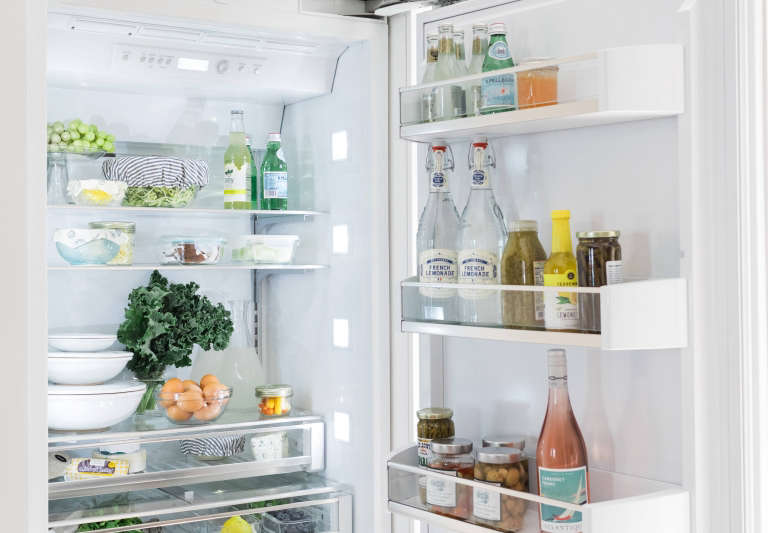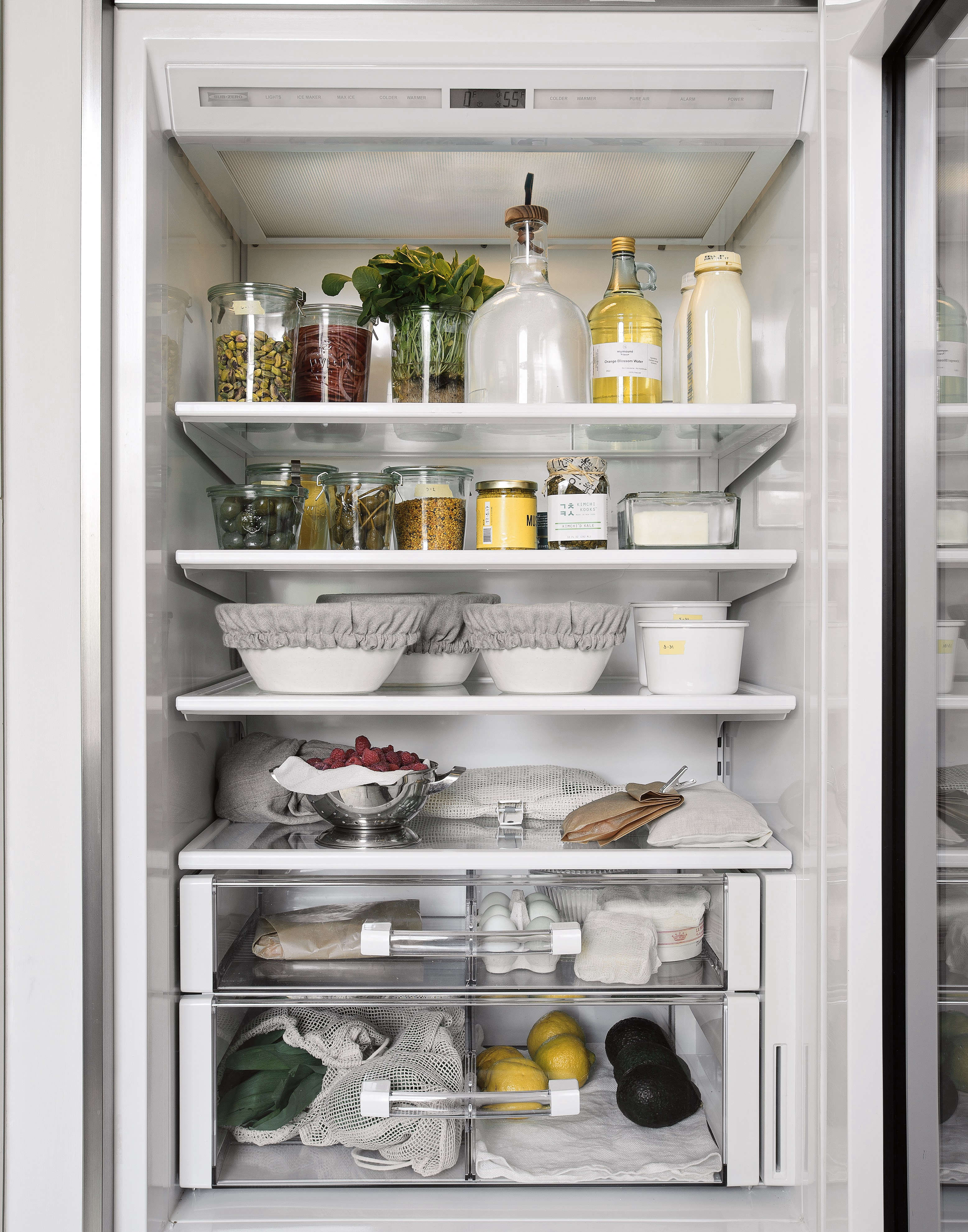
As a kid, I used to clean and organize for fun, and as an adult, I find peace and satisfaction from keeping a tidy home. The refrigerator, though, was an area that never made my weekly cleaning routine. What happens in the fridge, stays in the fridge was my motto. But then one day, I decided to deep-clean the appliance—and I was rattled by the level of filth and the number of past-expiration foodstuffs I encountered in there. My fridge wasn’t a place to store food; it was where food went to die and be forgotten.
After that day, I decided to educate myself on how to maintain an orderly and clean refrigerator so that it can efficiently do its job of keeping food fresh. Here are 10 things I learned:
1. An empty fridge is bad, an overfilled one even worse.
If you worry about something falling out every time you open the refrigerator door, you need to declutter—and not just because you may be a food hoarder. Filling every inch of your fridge can lead to forgotten foods, blocked air vents, impeded air flow, and reduced energy efficiency. That said, if your fridge is nearly empty, consider stocking it with a few bottles of water, which when chilled, helps the appliance maintain cool temperatures. Best practice is to aim for a fridge that’s two-thirds full.
2. Pre-cut fruits and vegetables at your own risk.
We know a lot of people recommend washing and cutting fruits and vegetables before storing in the refrigerator to encourage healthy snacking. Thing is, chopped-up produce will deteriorate faster since more surface area is exposed. Best practice is to wash and cut when you’re ready to consume it.
3. You’re doing it wrong if you store milk in the door.

The warmest spots in your refrigerator are inside the door and the top shelf. Since milk is liable to spoil, it should go in the middle shelf, which enjoys consistent temperatures. Same goes for eggs (don’t put them in the egg compartment of your door if you have one). Store condiments, which are usually high in vinegar and salt, in the door. And if your fridge has dedicated spots for dairy and sandwich meats, make sure to take advantage of them. The top shelf is ideal for snacks and leftovers.
4. Your fruits and veggies make terrible drawer mates.
If you have a newer fridge, you likely have two drawers, one for vegetables and one for fruits. It may be tempting to slide some greens from an overflowing veggie drawer to the fruit side on farmer’s market days, but try to resist the urge. Why? The veggie drawer is calibrated for high-humidity produce (greens wilt slower when there’s moisture) and the fruit drawer is set for low humidity (fruits rot slower in low humidity). Another reason to keep greens and fruits separated: the ethylene from fruits can result in vegetables spoiling prematurely.
5. The exception? Strawberries.
How many times have you been excited to open a new basket of strawberries only to find them mushy or moldy? You can extend their freshness by storing them in the vegetable crisper instead of the fruit drawer. Like vegetables, strawberries enjoy humidity (though not too much, so don’t wash them before you store them) and don’t tolerate ethylene.
6. Meats should be stored on the lowest shelf.
There are only two places to store your meat: in the freezer compartment or on the lowest shelf of the refrigerator, where it can’t drip onto any foods. We’ll go a step further: Place a tray under the meat on that lowest shelf; it helps to contain any possible leaks and makes it super-easy to clean in case of spillage.
7. Trays, bins, and baskets have a place in the fridge.

You’ve heard us advocate the use of trays, bins, and baskets throughout your home—and that extends to your refrigerator. Just as it’s visually pleasing to see pantry shelves compartmentalized with the help of bins and lazy Susans, a refrigerator that takes advantage of these organizational tools is a joy to behold and use. In my own fridge, I use a tray to hold meats on the bottom shelf, a bin to hold condiments that don’t fit into the door, and a colander to hold oranges (citrus doesn’t mix well with ethylene-producing fruits).
8. A disorganized fridge could lead to food waste.
According to a Johns Hopkins University study, 31 to 4o percent of the American food supply is wasted, and Americans spend $161.6 billion a year on food that goes to waste. One way to combat food waste as an individual is to make sure you know what’s in your refrigerator. Take the time to organize your refrigerator and find a place for everything—and there will be far fewer what-is-that-jar-of-mold-lurking-in-the-back moments. You may even want to designate an “Eat Me First” bin of food items that will go bad soon.
9. You can write directly on the refrigerator!
I recently came across a Rachael Ray Show segment on how to organize your refrigerator with The Home Edit ladies. Their clever hack? Use an erasable marker to list the contents with their expiration dates directly on the inside wall of the refrigerator. No labels needed!
10. There’s an easy hack for keeping it clean.

It’s taken me two decades to finally try this, and now that I’ve done it, I’m agog that I ever thought it was silly. I’m talking about lining your refrigerator shelves and drawers. I always found it to be unnecessary and fussy, as the insides of refrigerators can be totally scrubbed down if needed. Thing is, if you line the shelves and drawers with paper towels or kitchen linens, you 1) don’t need to deep-clean your fridge very often and 2) when you do, it’s as easy as a quick wipe-down. I’m now a convert for life.
For more on an organized refrigerator, be sure to check out:






Have a Question or Comment About This Post?